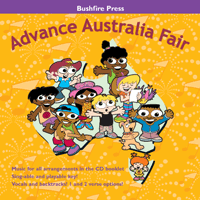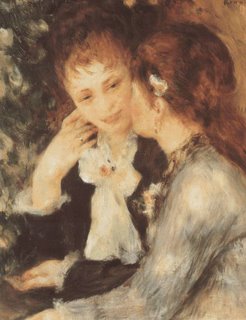
F W Boreham reflected on the theme of fulfilling one’s potential amid racial oppression.
He wrote and revised articles that specifically addressed the threatened extinction of the North American Indians,
[1] the problems facing the New Zealand Maori
[2] and the abuse of power experienced by the West Indians.
[3] Boreham’s main approach was to inspire readers by telling the story of individuals who had risen from racial struggles and who had overcome difficulties by themselves.
Notable Afro-American examples of racially oppressed people included George Carver whose awareness of being made in the image of God led him to “reach his potential in soil and agriculture”
[4] and Booker T Washington who “did his main work as an educationalist rather than an abolitionist”.
[5]Boreham’s attempt to relate these stories to contemporary issues was shallow. He described the problems that followed the abolition of slavery, saying care must be exercised in the period when legislators have authorized equal rights for blacks. He concluded that blacks “must learn to do something” and that leaders dealing with plight of African-Americans “have got a problem but in the meantime they have the inspiration of Booker T Washington”.
[6]In another editorial about the progress of black Americans towards their freedom, Boreham was cautious about them “running before they could walk” and stated that the ills of forceful protest counseled the “darkies” to “turn the handle not batter down the door”.
[7]A more thoughtful response to the problem of racial oppression is found in Boreham’s account of William Knibb’s fight against slave owners in Jamaica and the way Knibb convinced the British government to give a sizeable amount of money to meet the cost of liberation.
[8]Boreham was a great admirer of Mahatma Gandhi and in the editorial, ‘The Evolution of a Mahatma’, he traced Gandhi’s development from representing Indians against their oppressors in South Africa to his campaigns in India, redeeming the untouchables, pleading for India’s freedom from British rule, fighting for sobriety among people, advancing the equality of women and developing cooperation between Hindus and Moslems.
[9] This editorial in 1951 reveals the evolution of Boreham’s thought from his writings during the Boer War when he championed British domination in South Africa to a view that recognized India’s need to be “free from British domination and independent of British patronage, and yet in friendly and inalienable alliance with Britain”.
[10]Boreham was not a full participant in ‘The great Australian silence’, a term used by the anthropologist W E H Stanner to describe the ‘cult of forgetfulness’ or distinct lack of interest shown by historians in aboriginal issues from the early 1900s to the 1960s.
[11] Boreham was pessimistic about the future of Australian aborigines although his knowledge of history led him to be astonished at the “extraordinary facility with which native races, under new and congenial influences, enter upon a fresh lease of life”.
[12] His thinking was shaped by the anthropologist, Professor Baldwin Spencer, who said that the only hope of aborigines being preserved from extinction due to disease “lies in forming large reserves in which the tribes may be segregated and permitted, with some assistance in the way of education, to work out their own destiny”.
[13]In one of his first editorials about aboriginal issues, Boreham said, “The chances of the Australian natives ever becoming anything more than hewers of wood and drawers of water seem to be very remote.”
[14] Boreham uncritically expressed Arthur Keith’s assessment of aborigines who, in criticizing the absence of agriculture in the aboriginal culture, stated, “They have dreamed no dreams, developed no arts, produced no literature and invented nothing but the boomerang.”
[15] Showing that his views towards aborigines had not changed markedly, Boreham expressed his most damning criticism of the indigenous people as late as 1948 when he declared, “For centuries this huge continent was in the hands of aboriginal peoples who failed to make anything of it. And why? ‘They will not cultivate the ground,’ wrote Darwin in 1836’”.
[16]Many times Boreham drew paternalistic parallels between the Maori of New Zealand and the Australian aborigines saying, “Of all aboriginal races the Maori is quite easily the most attractive and the most intriguing. Compare him, for example, with our Australian native, and you feel that you are passing from one world to another.”
[17] In this editorial Boreham revealed that he possessed, in common with most compatriots, a “racial scale” in which his racist and patriotic views put Anglo-Saxons at the top and aborigines at the bottom.
[18]In another article Boreham wrote of the Maori, many of whom had earned university degrees and were serving in all the leading professions, but “our Australian aboriginals have as yet given no indication of a similar adaptability”.
[19] Furthermore, “the Australian aborigine is seldom credited with a superlative degree of intelligence”.
[20]About ownership, Boreham wrote, “We Australians cannot forget that the land in which it is our privilege to live is a second-hand possession”.
[21] He reminded his readers several times that the land “belonged to Australia’s aboriginal inhabitants before we received it at their hands, and only by exploiting its resources and giving it a standing among the nations can we justify its transfer from their hands to ours”.
[22]Boreham was silent about atrocities carried out by the early European settlers upon aborigines, adopting the approach of Baldwin Spencer and Frank Gillen who in their book, Across Australia, wrote in 1912 that it was sometimes necessary “to draw a veil over the past history of the relationship between the blackfellow and the white man”.
[23] Boreham was silent over the massacres of aborigines at Forrest River in 1926 and Coniston in 1928. His endorsement of laws to segregate aborigines was based on population reports heralding the need to protect them from disease and extinction.
[24] Boreham did not write about the unjust and discriminating aspects of the law that restricted the rights of aborigines in relation to voting, employment, marriage and possession of property.
It is interesting that as an ‘observer of days’ Boreham neglected to recognize the centenary of the abolition of slavery in the British Empire in August 1933. His article in July 1933 on the centenary of William Wilberforce’s death praised the reformer’s efforts in the emancipation of slaves throughout the Empire but lacked local reference concerning the oppression of aborigines in Australia.
[25] Contemporary historian Henry Reynolds said that such appeals for justice came from members of the Aborigines Protection Society and the Anti-Slavery Society that merged in 1907 who found that reports to Britain were their most successful avenue for protest. Reynolds observes that the agitation of these humanitarians incurred much wrath: “At best they appeared to be unbalanced—self-righteous, obsessive and fanatical. At worst they seemed to be disloyal, unpatriotic, un-Australian in both their activities and their excessive fervour in a hopeless cause”.
[26]Despite his more general concerns for the oppressed and disadvantaged, Boreham did not expose or denounce violence done towards aborigines. While expressing hope that aborigines might be saved from extinction, Boreham neither championed their rights nor called for a spirit of inclusivity in attitudes towards the indigenous people of Australia.
Geoff Pound
Image: George Carver
[1] Boreham,
Mercury, 11 March 1922.
[2] Boreham,
Mercury, 17 February 1923.
[3] Boreham,
Mercury, 25 March 1921.
[4] Boreham,
Mercury, 3 April 1948.
[5] Boreham,
Mercury, 16 November 1940.
[6] Boreham,
Mercury, 16 November 1940.
[7] Boreham,
Mercury, 8 February 1919.
[8] Boreham,
Mercury, 5 November 1947.
[9] Boreham,
Mercury, 16 June 1951.
[10] Boreham,
Mercury, 16 June 1951.
[11] W E H Stanner,
After the dreaming (Sydney: ABC, 1969), 7, 24-25. Examples Stanner cites include Ernest Scott,
A short history of Australia 8th ed. (Melbourne: Oxford University Press, 1950) and Gordon Greenwood, ed.,
Australia: A social and political history (Sydney: Angus & Robertson, 1955).
[12] Boreham,
Mercury, 4 March 1914.
[13] Boreham,
Mercury, 4 March 1933.
[14] Boreham,
Mercury, 4 March 1914.
[15] Boreham,
Mercury, 4 March 1933.
[16] Boreham,
Age, 25 September 1948.
[17] Boreham,
Mercury, 6 July 1940.
[18] Souter,
Lion and kangaroo, 233-234.
[19] Boreham,
Mercury, 4 March 1914.
[20] Boreham,
Mercury, 10 May 1924.
[21] Boreham,
Age, 17 January 1948.
[22] Boreham,
Mercury, 9 June 1934.
[23] B Spencer & F J Gillen,
Across Australia vol.1 (London: MacMillan & Co., 1912), 189.
[24] Major population records were published in leading papers in 1921, 1925 and 1933, all indicating that the aboriginal population was at a record low.
[25] Boreham,
Mercury, 29 July 1933.
[26] H Reynolds,
This whispering in our hearts (St Leonards: Allen & Unwin, 1998), 247-250.
 In examining the major theme in F W Boreham’s writings—‘Realizing full expression’—it is interesting to see that the theological dimensions were not explicitly drawn until his editorials took on a greater religious content in the 1940s. When an editorial on this subject was reworked into an essay for a Christian readership Boreham said:
In examining the major theme in F W Boreham’s writings—‘Realizing full expression’—it is interesting to see that the theological dimensions were not explicitly drawn until his editorials took on a greater religious content in the 1940s. When an editorial on this subject was reworked into an essay for a Christian readership Boreham said:
 F W Boreham recognised that one of the major challenges facing Australia and the first business of its politicians in the “plastic stage of its history”
F W Boreham recognised that one of the major challenges facing Australia and the first business of its politicians in the “plastic stage of its history”
 F W Boreham regularly developed his major theme of “making the best of oneself” in relation to the nation of Australia, expressing these thoughts particularly in his Australia Day and Anzac Day editorials.
F W Boreham regularly developed his major theme of “making the best of oneself” in relation to the nation of Australia, expressing these thoughts particularly in his Australia Day and Anzac Day editorials. F W Boreham reflected on the theme of fulfilling one’s potential amid racial oppression.
F W Boreham reflected on the theme of fulfilling one’s potential amid racial oppression. F W Boreham’s close relationship with his mother and his deep appreciation of his wife went a long way towards explaining the many articles and references he wrote in affirming the contribution of women to society.
F W Boreham’s close relationship with his mother and his deep appreciation of his wife went a long way towards explaining the many articles and references he wrote in affirming the contribution of women to society.
